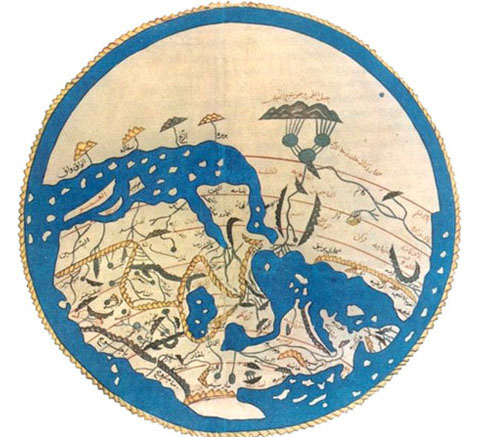Article of the Month - July 2020
“Enshrined Fortification: A Trialogue on the Rise and Fall of Safed”
(Uri Shacar: Ben Gurion University of the Negev)
Article Abstract:
The study of castles has formed a major part of crusade historiography since its inception in the early nineteenth century. Fortification has been taken to represent the magnificence of the efforts to rule the Holy Land and the battle between Christianity and Islam. Recently, however, scholars have recognised that, inasmuch as castles were celebrated as the epitomes of resilience and hostility, military architecture was far more dialogical than previously noticed. The design of castles involved a highly nuanced familiarity with the culture from which they were intended to defend. This article seeks to show that not only the physical characteristics of castles but also ideas about what made them religiously successful, in their capacity to enact and protect ritual spaces, were shaped through a dynamic inter-religious dialogue. Taking Safed as a case study, this article brings together three narratives—in Latin, Arabic and Hebrew—that share the attempt to laud the castle by drawing a dialectic between its strategic might and the sanctity of the soil upon which it is built. While the three accounts differ radically in their political stakes, the rhetorical strategies they employ in order to contemplate the spiritual efficacy of the castle is profoundly entangled.
Nomination Statement:
In this article Uri Shachar explores intertwined Jewish, Christian and Muslim accounts of the building, destructions and rebuildings of the castle at Safed (Tzfat). In addition to exploring both the function and symbolism of Crusader-era fortifications in the Holy Land, he shows how these buildings, constructed in the context of religiously-framed conflict, where nevertheless seen as existing within an confessional environment in which out-group scriptural communities were regarded as potent and legitimate. Examining sources drawn from these three religious and linguistic traditions, Shachar produces a study that embodies the spirit of Mediterranean Studies by looking across "civilizational" boundaries to produce a novel and original analysis.
Author’s Comment:
This article is about the way in which authors in the Near East imagined what castles do and how they function. My sense, after reading Ronnie Ellenblum’s brilliant book Crusader Castles and Modern Histories, was that communities clustered around collective fantasies regarding the ways in which castles (and borders) were imagined to be efficacious in commanding spaces and defining their religious identities. This certainly rang true for me having read De Constructione Castri Saphet, a famous account on the rebuilding of Safed in the 1240’s, which includes various digressions whose purpose and meaning I found hard to decipher. Then my friend Jonathan Rubin generously alerted me to a fascinating collection of small stories in Hebrew that circulated in the Near East. One of these was a highly peculiar story about Baybars and his attempt to conquer Safed. It is a parody which mirrors the many accounts in Latin and Arabic that chronicle the siege and fall of Safed to the Mamluks in 1266. But why would a Jewish storyteller look to intervene in this rather crowded literary space in which, it would seem, he does not have a clear political stake? I finally decided to delve into this question when I came across a little known History of Safed by al-‘Uthmani, that also offers what seemed to me like a spin off on the miraculous accounts found in De Constructione. I decided to write about how these various accounts in all three languages (Arabic, Latin, Hebrew) were deeply intertwined in producing mutually dependent narratives on the functional and spiritual efficacy of castles in the crusading Near East.
Would you like to discuss this article?
Start a thread on the Mediterranean Seminar list-server
See the other Articles of the Month here.
